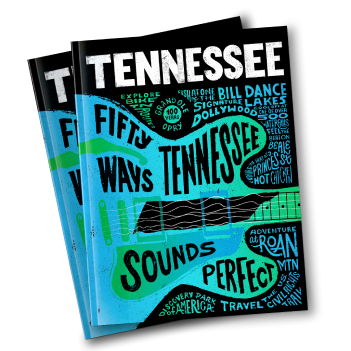Travel to these sacred places in Tennessee that commemorate and tell the stories of those who traveled the Underground Railroad in Tennessee in search of freedom.

In the mid-1800s, Memphis became Tennessee’s largest slave-trading city with more than 12 successful slave-trading businesses. Many of those who were auctioned and sold into slavery attempted to liberate themselves, aided by abolitionists along the Underground Railroad. One such individual was a German immigrant in Memphis, Jacob Burkle, who owned a stockyard and is thought to have operated an Underground Railroad way station on the outskirts of Memphis. Step inside Burkle’s home at Slave Haven Underground Railroad Museum and even descend into the dark cellar with its trapdoors and hidden passages that helped countless individuals find freedom.
Hunt Phelan House - Memphis
The Hunt Phelan Home, located on Beale Street in Memphis, was built mostly by slave labor in 1828 in two stages – the first in 1830 and the second in circa 1851 which added a two-story kitchen and service wing and a two-story porch. The home served as a Union hospital from 1863 to 1865. It’s said the home was a station on the Underground Railroad; a rumored tunnel under the house helped runaway slaves board boats to Illinois. You can see the home, but today it serves as an elegant event space.
Middle Tennessee Underground Railroad Sites
United Street Tours – Nashville
Sign up for a 2021 tour with United Streets Tours (2020 tours are paused due to COVID-19) to hear stories of Nashville you might not have heard before. This walking tour shares stories about where slaves lived, who they were and what they did in the city that was the second-largest slave port in Tennessee. Start on Lower Broadway to learn about black history. A walk along Riverfront Park will help you visualize where slaves traveled via the Cumberland River. Visit Fort Nashborough, an outdoor museum, and more.
East Tennessee Underground Railroad Sites
Chickamauga & Chattanooga National Military Park – Chattanooga
Chickamauga & Chattanooga National Military Park tells several stories of enslaved people of the region and the Underground Railroad. One such story is about Jacob Cummings, an enslaved person who worked on a farm on Moccasin Bend. His work sometimes took him into Chattanooga where he met an abolitionist from New York who encouraged him to escape. In July 1839, Cummings took a canoe and set off from the shores of Moccasin Bend and crossed to Williams Island in the Tennessee River. He traveled through the Sequatchie Valley and Walden’s Ridge, eventually making it to Canada where he was an active agent on the Underground Railroad. Today, you can find a quiet spot at the Moccasin Bend National Archeologic District, a component of Chickamauga & Chattanooga National Military Park, minutes from downtown Chattanooga.
Friendsville, Tennessee
Friendsville was established by Quakers in 1796. Because of their religious beliefs, the East Tennessee Friends were anti-slavery and pacifists, remaining neutral during the Civil War and lending help to any soldier or civilian in need. In Friendsville, Wilson J. Hackney and his wife helped more than 2,000 people in their trip along the Underground Railroad, accommodating up to 50 people at a time in a cave near their home. It was well stocked with supplies, food and bedding with fresh water provided by a nearby spring. See the history marker in downtown Friendsville, part of the Tennessee Civil War Trails, at 105 Homecoming Circle, Friendsville, TN 37737.
Embree House Historic Farm – Jonesborough
Learn about Elihu Embree of Jonesborough who published the Emancipator in 1820, the first newspaper in the U.S. dedicated to the abolition of slavery. You can visit his home, the circa 1791 Embree House. The house is said to have been part of the Underground Railroad as well. See the interior great room and of the house, the 1791 spring, the Angel Terrace, the Sarah Sevier Memorial Chapel and the 1850 train track which was the central point of the Civil War Battle of Limestone. Outside, you can take a walking tour where you can see the 1950 Emancipation Journey tobacco barn and the other sites on the 50-acre farm rich with history.
Warner Tabernacle African Methodist Episcopal Zion Church – Knoxville
Travel to Warner Tabernacle African Methodist Episcopal Zion Church, the first African American church in Knoxville. There, you’ll see a state historic marker commemorating the church as a reported Underground Railroad site. The church was established in 1845, fondly referred to as “the freedom church” for its work in the abolitionist movement.
Explore even more African American historic places in Tennessee.
Follow the Music in Knoxville
Get your feet tapping to the music flowing from Knoxville's venues and listening rooms.




















